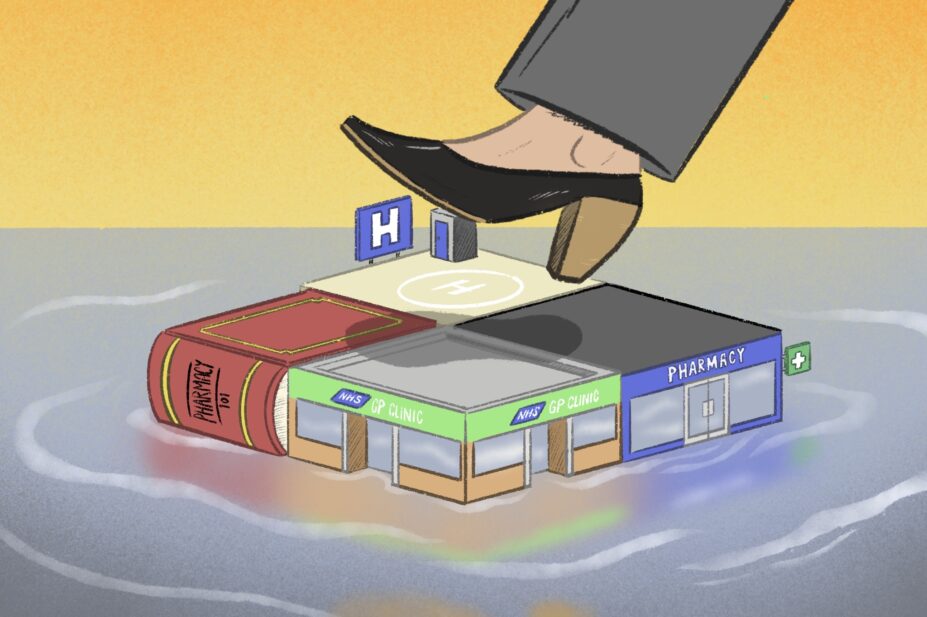
Wes Mountain/The Pharmaceutical Journal
With increasing demands on the pharmacy workforce in all sectors, as well as exciting developments in relation to the recent changes to initial education and training of pharmacists, the foundation training year is more important than ever to shape our new and evolving profession.
My preregistration training year was very much a one sector affair. I trained in a busy community pharmacy that I used to work in over summers while completing my MPharm at university. Once I graduated, I used this training year to gain exposure to all the facets of what it means to be a community pharmacist — throwing myself into the day-to-day running of the dispensary, counselling patients over the counter and liaising with GP practices about prescription issues. It was a busy year; the pharmacy dispensed more than 30,000 items a month and it was a great example of how established community pharmacies are the hub of the community.
The foundation training year will be make or break for undergraduates to thrive under this much more clinically driven environment
Fast forward ten years and I have moved to general practice as the lead pharmacist, managing a team of primary care pharmacists and pharmacy technicians at the forefront of their clinical practice. I trained and upskilled as an independent prescriber four years ago and now teach on the MPharm degree and the prescribing course at University of Brighton. Our profession is now focused on prescribing skills, clinical autonomy, diagnosing and managing chronic and acute conditions, as well as working much more closely with the multidisciplinary team. I believe that the foundation training year will be make or break for my undergraduates to thrive under this much more clinically driven environment.
With that in mind and given that the General Pharmaceutical Council has finally allowed general practice to be the lead employers for trainee pharmacists, I have developed a foundation training programme that gives exposure to four different sectors of pharmacy — general practice, community pharmacy, academia and secondary care — to best prepare the pharmacists of the future.
Instead of the conventional bulk three-month or six-month split, my students will be constantly exposed to two of the four sectors, allowing them to adapt to any new contract or services that come out throughout their training year, rather than missing the boat if these come after their rotation. They will spend four days a week across my four GP practices, working closely with my pharmacy team, paramedics, physician associates and GPs. One day a week, they will work within a community pharmacy local to the surgeries, which will allow them to upskill their dispensary and checking competencies and throw themselves into over the counter and minor illness service provision, such as Pharmacy First.
There will also be opportunities to experience what it is like to be an academic pharmacist and they will be offered the chance to try teaching the next generation of pharmacists as a lecturer at the University of Brighton, co-running a workshop with me. Another opportunity in secondary care will potentially be available to the trainee, with optional swap placements to a local hospital to experience what it is like to be a secondary care pharmacist.
Any lead employer for potential trainee pharmacist places from 2025/2026 will need to have a designated prescribing practitioner (DPP) in place and this will be incredibly difficult for some providers given the national shortage of DPPs. The placement I have devised mitigates this need because, since my trainee will work with me four days per week, I will be their named DPP. Not only this, but I will also be the named DPP for a foundation trainee pharmacist based at the community pharmacy, who will swap with my trainee and work with me at the GP practice for one day each week. This unburdens the community pharmacy from locating a DPP and allows them to create an unhindered placement for their trainee, with all of the new and exciting service developments that community pharmacy has to offer.
Overall, I hope that my trainee pharmacist model will pave the way for similar models that will allow trainees to have exposure to multiple sectors of pharmacy and different areas of clinical practice in a whole-week rotation rather than big chunks of time. I believe this is the best way to give the trainee adequate time to adapt and thrive in each environment and, in turn, become a well-rounded and competent prescribing pharmacist.
Pharmacy students are incredibly technologically competent and interact with media much more than when I was looking for a preregistration placement. With this in mind, and the fact that I am limited to a mere 950 characters on the centralised placement portal ‘Oriel’, I have included this YouTube link to explain the placement and give potential candidates a real insight into what it can offer.


